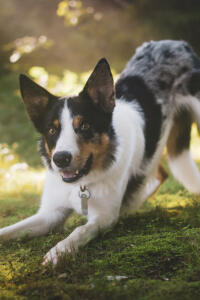tests/testthat/test-get_protected.R
In ropenscilabs/tinkr: Cast '(R)Markdown' Files to 'XML' and Back Again
test_that("protected nodes can be accessed", {
path <- withr::local_tempfile()
# five protected curly elements
curlies <- c("## curlies",
"\nThis line has {xml2} one and {tinkr} two curlies!",
"\n{#kitteh alt='a picture of a kitten'}",
"\n{#dog alt=\"a picture",
"of a dog\"}",
# two protected unescaped elements
"\n[span with attributes]{.span-with-attributes ",
"style='color: red'}",
""
)
# six protected math elements
math <- c("## math",
"\n$c^2 = a^2 + b^2$", # 1
"\n$$", # 2
# 3 <softbreak>
"\\sum_{i}^k = x_i + 1", # 4
# 5 <softbreak>
"$$", # 6
""
)
writeLines(c(curlies, "\n", math), path)
ex <- tinkr::yarn$new(path, sourcepos = TRUE)
# we should have two protected elements right off due to the braces
expect_length(ex$get_protected(), 2)
# one inline math, two softbreaks, one line of block
ex$protect_math()
expect_length(ex$get_protected(), 2 + 6)
# we should have six protected curly nodes
ex$protect_curly()
expect_length(ex$get_protected(), 2 + 6 + 5)
expect_length(ex$get_protected("curly"), 5)
expect_length(ex$get_protected("math"), 6)
expect_length(ex$get_protected("unescaped"), 2)
expect_error(ex$get_protected(c("curly", "shemp")),
"not \"shemp\""
)
})
ropenscilabs/tinkr documentation built on June 10, 2025, 3:06 a.m.
test_that("protected nodes can be accessed", {
path <- withr::local_tempfile()
# five protected curly elements
curlies <- c("## curlies",
"\nThis line has {xml2} one and {tinkr} two curlies!",
"\n{#kitteh alt='a picture of a kitten'}",
"\n{#dog alt=\"a picture",
"of a dog\"}",
# two protected unescaped elements
"\n[span with attributes]{.span-with-attributes ",
"style='color: red'}",
""
)
# six protected math elements
math <- c("## math",
"\n$c^2 = a^2 + b^2$", # 1
"\n$$", # 2
# 3 <softbreak>
"\\sum_{i}^k = x_i + 1", # 4
# 5 <softbreak>
"$$", # 6
""
)
writeLines(c(curlies, "\n", math), path)
ex <- tinkr::yarn$new(path, sourcepos = TRUE)
# we should have two protected elements right off due to the braces
expect_length(ex$get_protected(), 2)
# one inline math, two softbreaks, one line of block
ex$protect_math()
expect_length(ex$get_protected(), 2 + 6)
# we should have six protected curly nodes
ex$protect_curly()
expect_length(ex$get_protected(), 2 + 6 + 5)
expect_length(ex$get_protected("curly"), 5)
expect_length(ex$get_protected("math"), 6)
expect_length(ex$get_protected("unescaped"), 2)
expect_error(ex$get_protected(c("curly", "shemp")),
"not \"shemp\""
)
})
Embedding an R snippet on your website
Add the following code to your website.
For more information on customizing the embed code, read Embedding Snippets.
